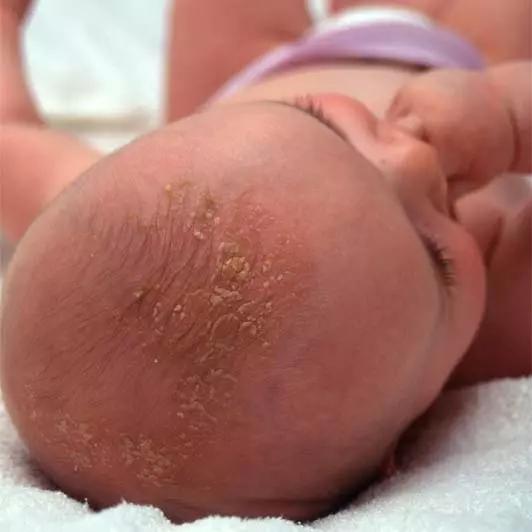Understanding Cradle Cap
Not long after baby’s birth, you’re likely to see thick, crusty and yellowish scales in patches on baby’s head. These stubborn little scales are commonly called cradle cap (seborrheic dermatitis or rash). What you’re seeing across baby’s scalp (and maybe even parts of his face) is a buildup of body oils and old skin.
Most often, cradle cap appears on a baby’s head, but it can also spread to other parts of baby’s body, such as his ears, eyelids, nose or groin—although this isn’t as common. Fact is cradle cap can pop up anywhere baby has oil-producing sebaceous glands, such as under his arms.
But don’t worry; even if it appears to be slightly reddish around the patches, it doesn’t hurt or itch, and it usually clears up within the first few weeks or months of life. Just be gentle as you work to loosen the scales over time so that you don’t irritate baby’s sensitive skin.
Clearing Cradle Cap
While you may be tempted to flake it off with your fingers, experts recommend you eliminate cradle cap over time with these steps:
- Wash baby’s scalp daily with a mild baby shampoo
- Gently loosen the scales with a soft baby brush or infant comb while the shampoo is on baby’s head. Avoid putting pressure on the soft spot—known as the fontanel—on his head
- For stubborn cradle cap, apply an infant-safe lotion or oil directly to the scales for at least an hour prior to washing to help gently loosen the scales
- If cradle cap persists, talk to your baby’s healthcare provider to discuss other options such as a medicated shampoo or lotion designed to eliminate cradle cap
FURTHER READING:
Making Your Home Comfortable for Baby
Steps After Bringing Baby Home






Comments are closed.